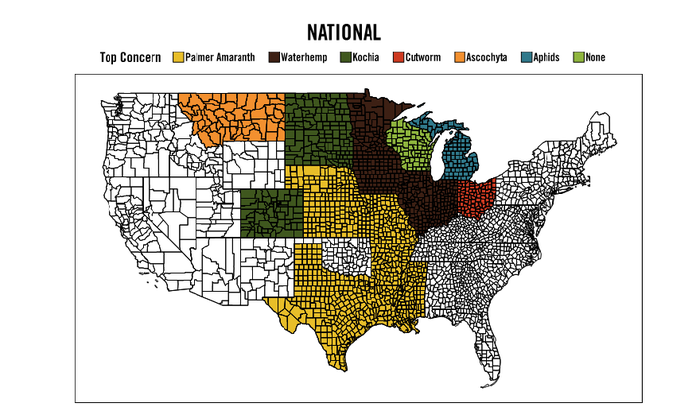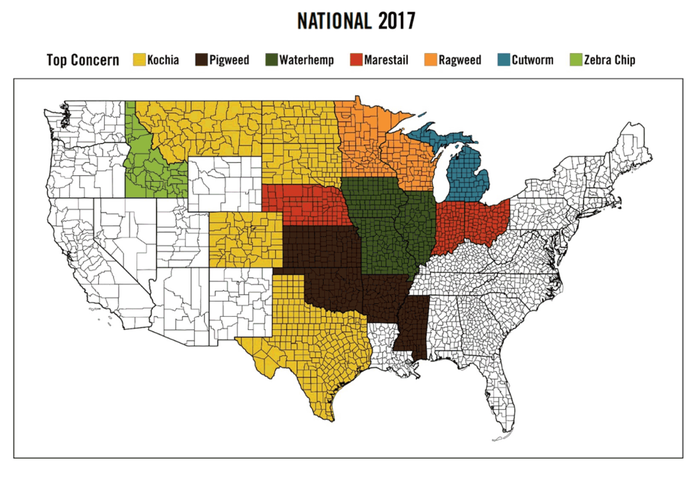June 27, 2018

In a June 7 poll of Farmers Business Network (FBN) members, they weighed in on top issues at that time, from insects and diseases to weeds and drought.
Following what turned out to be a wild sprint at planting, many farmers are now in a steady rhythm of fieldwork, with scouting and spraying fully underway.
FBN asked farmers what pressures they are facing so far this crop year, and how those issues compare to last year.
Top concerns for June 2018
When examining top concerns by state, FBN network farmers are concerned about weeds such as pigweed, waterhemp and kochia, as well as weed resistance. Other top of mind issues this month include drought concerns, followed by ascochyta, cutworm, spider mites, southern rust and giant ragweed.

Comparatively, a year ago, farmer concerns were also primarily about weed pressures, though they are experiencing and anticipating slightly different pressures between this year and last. Their top concerns were waterhemp, pigweed, kochia and marestail, followed by ragweed, cutworm and zebra chip.

To get a specific geographical breakdown of where these issues are located in 2018 and in 2017, click through the gallery. And the 2018 map colors correspond to this graphic:

How do you get ahead of these issues?
According to Farmers Business Network agronomists, last year’s pressures are not necessarily indicative of how conditions will evolve this year.
Here are a few things to keep an eye on in the coming weeks:
1. Think through what you should be controlling this year based on your current conditions, not what happened last year. So, if you worked hard against marestail last year because it was hot and dry, you may need to focus more on pigweed this year, based on your field condition today.
2. Watch for drought and rainfall numbers to change rapidly; that could indicate if diseases may kick up suddenly.
3. Keep an eye on Western Bean Cutworm on corn. These moths lay eggs around tassel time in corn, and they like the buddy system, so there could be as many as 30 per corn ear (unlike earworms, which are carnivorous, and you’ll see only one per plant).
4. If it’s hot and humid, keep an eye out for grasshoppers (they’ll die off from a fungus if it turns too humid).
5. On soybeans, remember that if you’re rapidly approaching the R1 growth stage, you cannot apply any herbicide beyond that point or you will be using the product off label. If you’re still seeing weeds in fields, consider an application before you reach R1.
About the Author(s)
You May Also Like






